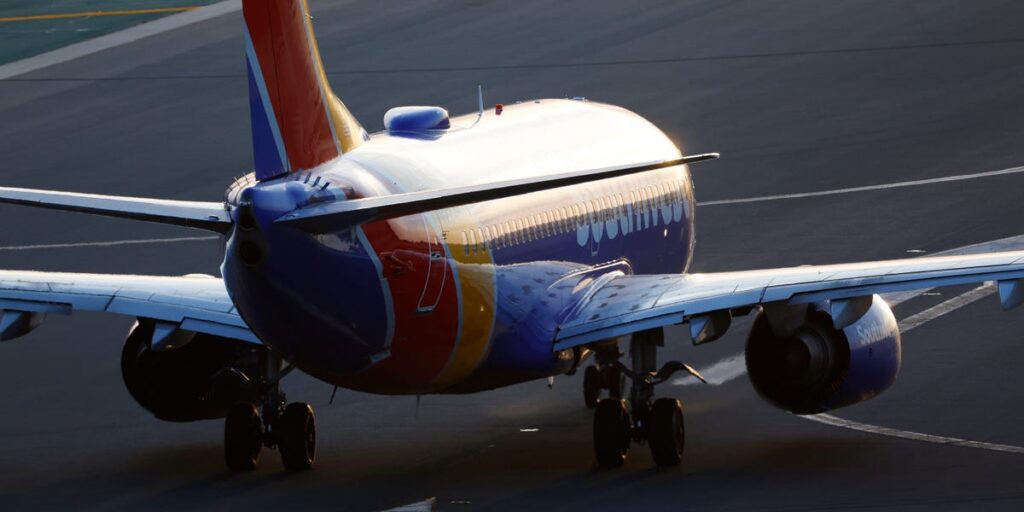Southwest Airlines is rolling out advanced cockpit alert systems across its entire fleet of Boeing 737 aircraft to help pilots avoid dangerous runway mistakes, including wrong-surface takeoffs, high-speed landings, and unstable approaches.
The airline has equipped more than 700 aircraft with SmartRunway and SmartLanding software developed by Honeywell Aerospace Technologies, a global aviation technology firm.
The programs work by providing pilots with real-time visual and audio alerts during taxi, takeoff, and landing, including “On taxiway,” “Too fast,” “Too high,” and “Long landing.”
The new systems build on Honeywell’s Enhanced Ground Proximity Warning System, which was already installed on Southwest’s aircraft.
The new system is design to prevent the kinds of potentially catastrophic errors that have become alarmingly frequent at US airports, including one in February when a Southwest Airlines jet narrowly avoided a collision with a private jet in Chicago.
“Today’s pilots face increasing challenges, including unpredictable weather and dense traffic in limited airspace, forcing them to make split-second decisions during takeoff and landing,” said Jim Currier, president and CEO of Honeywell Aerospace Technologies, in a press release.
“Southwest is continuing to put pilots and passengers first by investing in SmartRunway and SmartLanding software across its fleet,” he added.
According to Honeywell, the technology is already certified for a wide range of Airbus and Boeing aircraft and is already in use by several carriers around the world.
But despite its availability, many airlines have chosen not to activate it.
“Airlines elect whether they want to activate this technology,” Adam Kress, Honeywell’s director of external communications, told Business Insider. “It’s been available for years. There is a cost associated with it — it’s not free — but it’s also not mandated. Some select it, some don’t.”
Honeywell and Southwest did not share the cost of the system.
Kress said interest in the alert system has grown over the past year or two, driven by rising air traffic and a series of high-profile close calls at busy airports.
Public customers of the technology include Emirates and Alaska Airlines, but many airlines still haven’t opted in.
Southwest began activating the system in early 2024 as part of a broader initiative to manage emerging safety risks.
That effort also included changes to in-flight procedures, like moving cabin cleanup earlier in the descent phase to reduce crew injuries.
The decision comes amid renewed regulatory focus on runway safety. In August 2024, an FAA advisory panel recommended that cockpit alert systems be mandatory on newly built aircraft. The agency is reviewing the recommendation.
While some airlines, like Alaska Airlines, have already adopted Honeywell’s system, others rely on manufacturer-specific tools from Boeing or Airbus.
“It is a really powerful tool, we believe, to add more barriers to potentially bad outcomes,” Andrew Watterson, Southwest’s chief operating officer, told The Wall Street Journal.
“Safety is at the heart of everything we do at Southwest,” Watterson added in a press release.
Read the full article here


